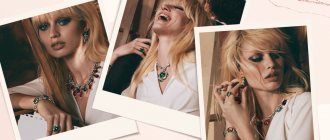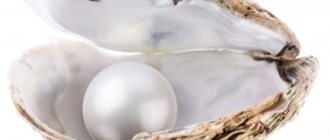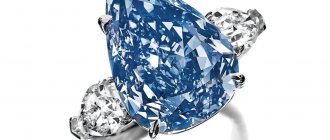Moskvich
Ilgiz Fazulzyanov is the only Russian jeweler and enameller who has received great international recognition. He is a two-time winner of the jewelry Oscar, the Grand Prix of the International Jewelery Design Excellence Award in Hong Kong, has collaborated with the legendary watch house Bovet and Van Cleef&Arpels, his galleries are open in Moscow and Paris.
We know the jewelry brands Cartier , Tiffany , Van Cleef & Arpels and don’t know Russian jewelers at all. Why is that?
Firstly, it has to do with the media. They print what you have to pay money for, and these companies have a lot of funding. Designer jewelry doesn't have that kind of money. I think this is the fault of both the Ministry of Culture and the publications themselves. They could have allocated at least 15–20% of advertising for global brands to local craftsmen. Do it as a charity, or something, so that artists in our country develop.
Then there is the art of authorship - it is not very developed everywhere. There are only a few of us in all countries. Recently a jeweler came to see me from England and said that they have exactly the same situation, where jewelery authors cannot develop themselves: to start a business they need financial investments, maintenance costs, there is nothing to say about advertising. Masters are forced to go to large companies that absorb them. As a result, no one knows their names.
Yourself and your brand I lgiz F . you classify it as designer jewelry, boutique and unnoticed by the general public. How did you achieve, if not fame, then recognition?
I am not the only unique master in Russia. Another question is that not every artist has a commercial streak, the spirit of a businessman. What is business? It's just not to be afraid, invest money and move forward. Somewhere I was losing money, but I understood that I would achieve my goal. To reach this result - for 28 years now - I have not violated my goal and my style. I started with the most difficult things, went into the red, no one bought my things, it happened, but I still knew that sooner or later some doors would open. This went on for about 15 years. Now a certain world knows me. If someone really needs jewelry that is high quality, handmade, it’s all for me.
Your jewelry is not just made with high quality, it is impeccable. The reverse side of pendants, earrings, necklaces and rings is in no way inferior to the external side, either in processing or design.
There is no other way. The same Cartier and Van Cleef are no longer jewelry, they are more jewelry. Only from precious metals. This is all massive, but due to materials and marketing it costs a lot of money.
But big brands make high jewelry collections...
This is, in our understanding, high art from the perspective of ordinary people. For example, if Cartier and Van Cleef still maintain jewelry technology somewhere, then in others many things are no longer made with jewelry. There is such a concept - jewelry technology. For example, Chanel makes jewelry using costume jewelry technology.
What is the difference?
These are connections, assembly, processing. There are a lot of moments. For most today, value lies in the brand and the cost of materials - a large diamond, sapphire, ruby. Nowadays there are few people who pay attention to the quality of work, aesthetics, and artistic component. Luckily for me, these few know about us.
Your works are so self-sufficient that you begin to doubt whether they can be worn.
I wouldn't say that. You only see these works bright and shiny in the window. Once you put them on, you get completely different looks. They are discreet, begin to fit into the silhouette and character of a person, so everyone finds their own item. The same red poppies glow warmly on some people, but on others they actually burn. This is enamel, a living material. My things are different from those items that are all in diamonds, sparkle and sparkle. Yes, we also use these stones, only delicately. I prefer interesting stones that create an image to diamonds. For each decision, we look for a specific color of the stone, its tonality, and degree of luminescence. Yellowish-green vesuvian, sphene, brightly shining demantoid, we even use hazy blue aquamarines that other jewelers may consider low grade. But for me it is a unique stone that paints an image.
Your main “paint” is jewelry enamel, a highly complex technique. Are you trying any new materials?
Jewelers are constantly using new materials. There was Bakelite, an artificial resin used to make locomotive parts in the Soviet Union and into bracelets in the United States. JAR worked with automotive enamels: they dry at low temperatures and adhere firmly. Titanium, finally, is not a jewelry material, but it has also begun to be used. Now there is another new material - nanostal. This is a glass-crystalline material made using nanotechnology. It has the hardness of quartz, but the shine is much better. You can set it to any color and transparency.
I prefer interesting stones that create an image to diamonds.
I use moissanite, an artificially grown silica-based stone. It has dispersion, the ability to shimmer, higher than that of a diamond. I also work with jewelry resins. This is an inexpensive composite material that is used more in modeling and construction. They can be hard, durable, and elastic, depending on what exactly you want to do. Products made from them are large, but weightless. Imagine a chrysanthemum flower. It would be impossible to do it in gold, it would be too heavy, but with resins it is possible.
Modern technologies make it possible to achieve completely new effects at a fairly low cost. Another question is to what extent these experiments will become part of the permanent repertoire of jewelry art. If well-known companies and craftsmen work with such materials, they will be recorded in it.
Tell us about the engineering solutions behind your work.
Each product is carefully thought out. It is very important how it will be located, how it will contact the body. For example, in large earrings the weight should be distributed correctly so that the earlobe does not feel it. Reliability of connections is very important, especially in moving parts. Technical discoveries and ideas are very important for large things - pendants, brooches, necklaces. On the one hand, they attract attention, on the other, they allow the implementation of innovative ideas. And by the way, they surround us in great numbers. They can even be found in children's prefabricated toys; it is important only then to turn it into a jewelry connection.
Your opinion about the “costume jewelry” value of jewelry is interesting, because some buyers invest in them in order to monetize them in difficult times.
Let's be clear about what a jewelry investment is. This is beneficial when there is a secondary market. Let's say we invest in securities, sell them on the stock exchange or through a broker, and return some funds. In the jewelry business, investments are complex, very long, although they bring a unique interest rate. No securities bring such income. But the right investment will only be the item that you initially buy below the market price.
Due to the fact that there are no secondary markets other than auction houses, our people’s segment of investment items is immediately narrowing. They limit themselves only to precious stones. And this is what happens with this in Russia: when the stone is brought into the country, it increases in value quite significantly. Taking it out of here becomes problematic - customs, insurance, etc. That is, you can no longer put it up for a decent auction. Anyone who has encountered this once understands that he will no longer do this. Because you need to know the tools. If they turn to brokers for securities, then everyone relies only on themselves.
As for jewelry, it increases in price if it was owned by a famous person. Plus they must be original, there must be an artistic component. Let's take Lalique. His products were initially of no use to anyone. But Gulbenkian appeared (Calouste Gulbenkian, an oil magnate of the first half of the 20th century, a collector, bought part of the Hermitage paintings during sales in the 1930s. Together with the collection of René Lalique’s jewelry, they are exhibited in the Gulbenkian Museum in Lisbon. - Author’s note), then appeared there were also people who bought his jewelry, wrote books about him, held exhibitions, promoted him. Many art dealers now work with artists this way. But people bought jewelry from us, put it in a safe and think that in five years it will increase in price. But there are no guarantees for this.
A smart client does things differently. I have a client in London. His daughter worked as a lawyer at Christie's and knows how the art market works. They held an exhibition, published a book, made a year-long tour of America with my products, and also made money from this. This is a smart approach. Products should not live in a safe, they need an audience. Plus there may also be customer consolidation. There is a master, clients gather around him and collect his products. Need to make an exhibition? These people invest in the exhibition, donate products for the exhibition, make a catalog, and make a profit. This is what is called the investment component. For example, JAR is the same (the jewelry house of Joël Arthur Rosenthal, known for its select clientele, the perfection of jewelry and the absence of advertising. - Author's note). His value became so high because of his clients, not because of himself.
Do your clients do this too?
I would like to, but the majority of people buy jewelry for themselves personally and hope that time will pass and, thanks to me, their jewelry will increase in price. I, of course, hope that this will happen, and I am trying very hard to be one of those few jewelers in the world who have achieved something. There are many jewelers who work for large companies or, conversely, sit at home and make one or two pieces a year. And those who are well-known, who release albums, who are known about, who participate in museum exhibitions, are few.
By the way, about exhibitions. Your name sounded loud just after such an exhibition, held in 2016. For four months your works were exhibited in the exhibition hall of the Assumption Belfry of the Moscow Kremlin. How did this become possible?
For many years we made our way to museums: to the Kremlin, to the Pushkin Museum. Pushkin. I had a task - to hold a large-scale exhibition. Nobody accepted us. The Kremlin happened by the will of fate. In 2009, there was an exhibition of the treasures of the Indian Maharajas; a group of important people came from England, among whom were descendants of the Maharajas. Everyone gathered in Gagarina’s office (Elena Gagarina is the general director of the Moscow Kremlin Museum-Reserve - Author’s note) and began talking about jewelry art. And among other things they say, you know, in Russia there lives a jeweler with a very complex name. A Kremlin employee who knew me very well was sitting there. “Isn’t it Fazulzyanov by any chance?” - “Exactly, exactly. We would love to see him and see his work live.” Gagarina asked if she could somehow call me. We immediately agree on a date. I am informed that the meeting should be conditionally at one o'clock in the afternoon. Gagarina arrived at 11 o’clock to check how good the premises were. When she came to my office, she saw that there were flowers everywhere and the smell of coffee... She was shocked. She knows that jewelry workshops are always smoky and dirty, she probably thought we were sitting in some kind of basement. Instead of forty minutes, they sat with me for five hours. And then Elena Yuryevna said that she wanted to hold an exhibition with me in the Kremlin. The following week we began preparations that lasted two years.
As for jewelry, it increases in price if it was owned by a famous person. Plus they must be original, there must be an artistic component.
We took some works from private collections. The idea of the exhibition was to show my growth as a master. From the first, uncertain works to today’s 100% verified masterpieces. But I set myself a task: at least 80% of the work had to be done specifically for this exhibition. I showed the Kremlin administration what works would be presented, and the sketches were approved. This is because the exhibition included different technical capabilities and different directions to make the exhibition multifaceted. I wanted to create such a collection that people would walk around two or three times and not realize that they were looking at the same thing, so that they would not get bored. Today, holding a jewelry exhibition of a specific author is not such a common occurrence. We exhibited 170 works, and this was also unprecedented for a modern master. I was pleased that the Kremlin bought some works after the exhibition and continues to expand its collection to this day. There are now about 30 of them in the Armory Chamber's collections.
There was very high attendance. People came from all continents. It even turned out that Tiffany sent its employees to my exhibition. There, in the Kremlin, I heard a visitor say: “Finally, you can see modern masters, otherwise everyone shows what happened 100–200 years ago. It’s as if we don’t even have masters.” Simple words, but so accessible and understandable. Indeed, everyone is used to watching what once was, but no one shows what really exists in their own country, because it is impossible to break through. I really want to make an exhibition of individual craftsmen who make jewelry as an object of art. One such master can create only one or two works in a year. To collect bit by bit the outstanding works of masters from the country or even the world into an exhibition or an entire museum is my big dream.
Is it difficult to be a jeweler?
Roerich wrote to Princess Maria Tenisheva, who was a philanthropist and enamel artist: “You are engaged in art, which is its highest point. It is the most complex, the most voluminous of the arts.” Jewelry art unites all types of arts, technologies, and the capabilities of the people for a given period of time. A jeweler must be very versatile. Must know the basics of drawing, painting, sculpture, space and architecture. He must know chemistry, physics and mathematics. And you need to combine all this knowledge to create a thing with your hands. We often have one artist and another jeweler. Many designers suffer from this - they bring a drawing to the master, but he will do it differently. This is an eternal problem.
It’s interesting that there’s something like a boom among young people now: “I want to be a jeweler.” I talked about why they go into the profession. And you know, everyone really dreams of working in the fashion industry, but they think that it’s already difficult to break into dressmaking. They begin to think that photography or jewelry design is something in which they can express themselves. Like any other field related to aesthetics, jewelry design is attractive. But no one sees the other side: you have to sit at a workbench, with dirty fingers, forcing the metal to obey you.
And young consumers are coming to you, do you feel any change in demand?
Today, interest in purchasing real jewelry is falling very sharply. He may disappear altogether. Young people are more interested in jewelry. Even my daughter, she is 28 years old, says why buy earrings for 20-30 thousand dollars, it is expensive and impractical, you will still have to store them, think about safety. I’ll buy myself jewelry for 2-3 thousand for a party, under a dress. Then I can give it to someone. Today, image is more important than the artistic value of jewelry. I liked the words of Elena Veselaya: “Today there are no people who know how to wear jewelry like those women in the 20th century.” These women have a different spirit. Jeans and “simple” diamond earrings have become new classics, but this in no way develops the art of jewelry, only the business of diamond mining companies.
Does this mean that jewelery is a dying profession?
Not at all. But it is important to pose another question: how today, when people want to look more than buy, transfer jewelry items to a different state.
That is, the prospect of the jewelry business is to transfer jewelry from the state of wearable pieces to art pieces?
Exactly. People have more desire to admire than to acquire something. And we are now trying to create an exhibition collection to show throughout Russia and abroad.
I can't help but think about the 15 years you spent searching for yourself. You do something all the time, but do not receive support from the outside - this is a very difficult situation. Where does it get its resources from?
Obsession with an idea is a great resource. Energy resources are also provided by clients who express their emotions. You realize that you are on the right path. This is enough for many people. But my goal was not just to earn money, but to reach the pinnacle of jewelry art. My goal is to reach the highest point of excellence. Each work is a new look, new technical capabilities. All funds have always been invested in the work process. I still catch myself thinking that I probably haven’t yet created that final object that I’ve been working towards for many years. Probably, all my works are all stages towards something. People ask me if I keep anything. No never. There are works that I give to my wife, which she keeps personally. As an artist, I don’t say, “This is my masterpiece, I’m not selling it.” If I say that even once, I won’t create anything better tomorrow. I should always feel dissatisfied with myself. You need to be very critical of yourself in order to grow.
Brooch pendant “Poppies”
Ring "Himalayas", ring "Ararat"
Earrings “Tokapu”, earrings “Inca”
Ilgiz Fazulzyanov. Your path in jewelry art
Ilgiz does not have a classical jewelry education, but, always following his intuition, trying different methods and techniques, he found his own unique style and recognizable handwriting in working with hot enamel. He has twice won the International Jewelery Design Excellence Award.
Each Ilgiz F. piece is unique and is a true museum-quality work of art.
In 2021, after a personal exhibition in the Kremlin, the museum bought 25 works by the jeweler for its collection.
Ilgiz collaborates with the Swiss watch company Bovet, gives lectures at Van Cleef and Arpels, spends days and nights in the workshop creating new masterpieces and does not keep track of where his works end up, but it is known for certain that the Queen of Spain also has Ilgiz F. jewelry , and in the collection of Margaret Thatcher.
– Ilgiz, your personal exhibition in the Kremlin in 2021 created a lot of noise. How do you evaluate it yourself? Did it somehow influence your creativity and brand development?
– This was not quite an ordinary exhibition for the Armory Chamber. It became a turning point not only for me, but also for the museum itself - for the first time, contemporary jewelry art was presented to the public within the walls of the Kremlin. I prepared a large collection for this exhibition - 186 works, of which the museum bought 25 for itself. Soon a permanent exhibition will be opened on Vasilyevsky Spusk, where my works will be presented.
For me as an artist, a certain level has appeared, below which I no longer have the right to fall. Once collectors, specialists and international experts have learned about you, they look at you with completely different eyes. This greatly increases the demands on yourself.
The result of this exhibition was the collection “Great Peaks of the World”. It reflected my inner state at that moment - having climbed a mountain, each person decides for himself whether to stay at the top or go down.
– Five Great Peaks
–
is this symbolic for you?
– I drew a certain parallel from Japan to Italy. Each of the five peaks - Fuji, Ararat, Kilimanjaro, Vesuvius and the Himalayas - reflects a certain stage of 25 years of creativity. But I wouldn’t like to stop there; I was recently given an amazing book that describes 100 great mountain peaks. So I need to climb another 95. And this is wonderful, because each mountain is unique in its own way, it opens up new views and endless horizons.
– How long does it take to create a new collection?
– It’s quite difficult to talk about this, because several works are being done at the same time, and it is necessary to switch from one energy wave to another. The jobs are all different. If you do them on the same wavelength, then they will all be the same. Each time the process of birth of a work is unique. Sometimes it fires instantly, and sometimes it takes longer. The “Bullfinches” pendant was created on a whim in just four days. I did it completely myself, without assistants. Everything from start to finish. And now, if we repeat this work, and 3-4 people are involved, it won’t be done in less than 2 weeks.
– Do you duplicate your work?
- There are no duplicates. It is impossible to repeat a perfect job. We do not save casts. When clients ask for some work to be repeated, small deviations still result. All works are one-off and are done live. We have sizes, general parameters and that's it. No matter how much we want, the work will turn out different - the mood is different, the message is different, the desires are completely different. Time passes, and that initial energy can no longer be repeated, you are already on a different wavelength - you just do the work, use only your skill. You can no longer invest the artist’s energy there. It’s difficult to put into words how this happens in reality, it’s impossible to explain – it’s some kind of chemistry.
– It turns out that you are making an effort on yourself as an artist in order to repeat a piece of jewelry that has already been created?
– Creating the same work again, it’s as if you’re taking a step back. It is impossible to maintain the same enthusiasm after 5 years. The man has changed, his thoughts have changed. There is no longer that impulse that is always present initially, enveloping the whole process with some kind of magic.
– Do you consider yourself to some extent a wizard?
– Any creativity is magic. A wizard is a person who does something unimaginable and incomprehensible to others. The entire history of the creation and use of jewelry goes far into the past, when jewelry was created specifically for a person and for specific needs - to protect or bring good luck. Jewelry was used as amulets, and jewelers had to be close to God and were often ordained. When certain stones are taken, metal is melted, combining certain symbols into a single form, not only magic arises, enormous energy is born.
– How does the idea of this or that decoration come about?
– Behind each work there is a story – my own story, the story of my life. Someone writes down their emotions and experiences in a diary, and I transfer all this into a product. When a work is created for a specific person, it’s as if I penetrate into a completely different world, emotionally plunging into its special energetic environment. I am always very interested in exploring the inner world of a person, which every time gives rise to some associations in me and awakens the inner instinct necessary to create personal jewelry.
– Do you think decoration can be old-fashioned?
– There is no concept of old-fashioned jewelry. Look at how many beautiful antique works that are 100-150 years old, but they are still relevant now. Art has no concept of limitation. It always lives. Another question is how it is worn and what it is combined with.
– Your works can be bought in Moscow, Paris, London and many other cities and countries. Are there any special jewelry preferences specific to a certain country?
- Certainly. One thing is suitable for the Parisian public, but something completely different for the London public. America is completely different. We recently participated in a jewelry exhibition in Hong Kong, so it’s a different story there. It is imperative to take into account the culture of the country and the psychological formation of the personalities of the people living in it. I know that Christie's produces brighter catalogs for the Asian region, because everything is perceived differently there: a ring on a white background is clear to a European, but a Chinese simply won’t see it.
– Who do you think your new collection “Samarkand” is best suited to?
– You know, it came as a surprise to me, but this topic turned out to be close to a huge number of people. She was received very well. It's hard to say whether the combination of colors and patterns of this city influenced this or my interpretation. In fact, many elements from Central Asia have entered European culture: argumentation, lines, colors. People who purchased the works say that this topic is relevant to them. I can't even say that it's fashionable now. Fashion today is not very clear, it is somehow motley. I wanted to make this collection and I did it. It is important to me that the work turned out well and will live.
– Your works invariably amaze with their beauty, grace and unusual execution. Are you surprised by the work of other jewelers?
– Old masters, undoubtedly. I myself studied various techniques from different masters and combine them in my works. But modern jewelers sometimes surprise. Another thing is that you have to search through a huge number of works. It is often very difficult to judge an artist’s skill based on one piece he makes in a year. It is impossible to put into it everything that the author has in mind, and not everyone can create 10-20 works in a year. To get a feel for a jeweler, you need to know him completely, the full depth of his capabilities. Only then will you understand how deep the master is.
There are often craftsmen who make amazing jewelry, but they remain just jewelry. But I’m still talking about artists.
– Are there any programs to support jewelers?
– We are still working on the program. Recently we decided to represent other jewelers in our gallery so that they could show their skills to the end consumer. We will set aside a place for this and display one master in each showcase. We will invite our own clients and show not only our work. Any creative work requires fans who purchase the artist’s work. This is necessary for creativity to live. If the work is not interesting to anyone and is not sold, the artist begins to suffer and forgets what art is. This is the saddest thing.
– A bold step. Don't you perceive them as competitors?
– There is no concept of competition in creativity. Here we will present those masters who do not compete with each other. Author's works. Each artist has his own unique style.
– The profession of a jeweler is a craft, the secrets of which are often passed on to other generations. Do you already have your own students?
– There is the concept of “craft”, and there is the concept of “artist”. These are completely different things. The artist knows how to embody his thoughts and make them materially visual. Unfortunately, over the years I have rarely come across people who were artists. But becoming a craftsman - a good master - is already good. Formally, I don’t have my own school, but in essence it has formed itself over many years: those who work with me learn at the same time, and when they start working on their own, they put into practice what they have learned.
– In your interviews, you often say that you did not receive a professional education as a jeweler, but studied various techniques on your own and followed your own path. Maybe this is the secret of your unique style?
- Quite possible. When they build you only one corridor and tell you what is right and what is wrong, this creates a certain framework for creativity. And I just walked. I had an idea, and I didn’t think about whether I was doing it right or wrong from a jewelry point of view. Therefore, I have a lot of works and especially techniques that have never existed in jewelry. No one has ever done this, but I did it. There is probably a certain risk in this when you do something that no one has ever done. But even if something doesn’t work out, it’s a good lesson. You start thinking about how to do it differently. A negative result is also a result. This was the case for me at the very beginning, but apparently some inner instinct and experience suggested that I was on the right path. A thousand years ago, people did not draw huge architectural structures, but built them with the feeling that this is how it should be. And they still stand and are pleasing to the eye. It's the same here. Inner instinct must be present. I was probably born with this gut feeling. For me, images come together in everything.
– So, you have created your own path that other jewelers can now follow?
“I’m already seeing many people trying to follow this same path. But I always say: find your own path, do not follow the one narrow jewelry corridor along which you were directed.
– Do you think there can be an infinite number of them?
- Certainly. Each person has 1000 options of where to go. Plus there must be a powerful emotional boost. It could be music, travel, talking to people, or just a walk in the woods. Each person must realize for himself what the cocktail of emotions that should spill out into a certain step brings him. Some start writing books, some start writing poetry, some start drawing, some start doing something else. It's different for everyone. And I put everything into my work.
– What is the most powerful boost for you personally?
- Leisure. Wherever I am, I definitely need to drive around, see everything and climb everywhere. Rest is also when you are alone. A day or two, no more.
– There is a certain stereotype that jewelers always give only jewelry to their loved ones. How is that?
– In fact, this is the scourge of my profession. Every holiday something is expected...
– So you can’t give a saucepan?
– I gave it once. Not just a saucepan, but the whole huge set, which, by the way, my wife really wanted. But when I handed over my gift, I began to look for the small box hidden in it. Like, a saucepan is, of course, good, it’s the main gift, but where is the additional one?
– In London you are known and loved. Do you have plans to open your own store or gallery in London?
– There are no immediate plans for this. We have been represented in Harrods and Annoushka for several years, and soon one of the oldest jewelry stores in London, Bentley & Skinner, will become our representative.
Valuable contribution: interview with jeweler Ilgiz Fazulzyanov
The editor of BAZAAR Kazakhstan introduces the Russian jewelry brand Ilgiz F., which is still little known in our country, but has already won recognition from major European Houses and connoisseurs of designer jewelry.
Masters from the CIS are not yet so widely known in the world. It was all the more interesting for me to talk with Ilgiz Fazulzyanov, a Russian jeweler who has become famous for his unsurpassed skill in working with enamel and even created his own unique techniques in this matter. His treasures can be seen at major auctions at Christie's and Bonham's, and the House of Van Cleef & Arpels invited Ilgiz as a lecturer at its Parisian school.
“What I like most about teaching is to awaken interest in the traditions and fundamental principles of jewelry art, to show that behind external beauty and grace there is a serious technical basis - like in ballet. And at that Van Cleef & Arpels lecture, the most interesting part was the questions, because all the prominent professionals gathered there, and the conversation turned out to be very exciting.”
By the way, this was not the first collaboration with a global brand: before that, the jeweler created painted enamel dials for the Swiss manufacture Bovet 1822.
View this post on Instagram
New Bovet watch face by Ilgiz F. SIHH, Genève. Hot enamel, 3D effect
Posted by Ilgiz (@ilgiz_f) Jan 18, 2021 at 1:33 PST
With all this, Ilgiz is interested in the development of jewelry in his country. In Moscow there is his personal gallery, which is also an educational platform: “A lot of work has been done, almost every month we gathered professionals and amateurs for special lectures and events. The most important event, in my opinion, should be the winter exhibition in early December, which will bring together about 25 contemporary jewelry artists, both famous and very young - for some this will be the first exhibition project. And this is exactly the result, the opportunity to talk about contemporary jewelry, for which I opened the gallery.”
Each piece of jewelry marked Ilgiz F. is unique and created in a single copy. Will he produce more affordable and widely distributed products? “It’s hard for me to even think about it. Still, what I do is not mass production, but an original work, with a completely different level of technological complexity. The techniques and methods that I use cannot be put on stream. But if we simplify it, then it will be a completely different brand.” This answer upset and pleased at the same time: after all, precious uniqueness is always more desirable, although less accessible to the general public. Personally, I treat such jewelry as works of art: they are aesthetically pleasing and provide their share of inspiration.
View this post on Instagram
Posted by Ilgiz (@ilgiz_f) May 16, 2021 at 1:25 PDT
What motivates a master to work? In various interviews, Ilgiz has repeatedly mentioned that music helps him create, and he shared his playlist especially for BAZAAR Kazakhstan:
I have always wondered when a person has been doing the same favorite thing for many years (Ilgiz’s first jewelry workshop was opened in 1992), does this affect his non-work life? Does so-called professional deformation occur at some point? “I probably have it too - wherever I am, whatever I see, I immediately begin to think about how it could be used in decoration. How can the curve of this door handle become an ornament? What color does this dress go with? But this interesting flower - can it be turned into a brooch or a ring? I constantly notice details and turn them into jewelry elements.”
26 years of activity is a considerable period. It’s impossible to count how many materials and unique stones have passed through Ilgiz’s hands over the years, but there are always moments that are etched in the memory for a long time: “The Bullfinch pendant, with which I won the Grand Prix in Hong Kong. This was the first serious competition where professionals rated me so highly. In fact, a new career stage! Since then, this decoration has symbolized international recognition for me.”
View this post on Instagram
Posted by Ilgiz (@ilgiz_f) Dec 28, 2021 at 2:29 PST
And after that exhibition, a lot really happened: today the Ilgiz F. brand is represented in Paris, Geneva, Tokyo and New York. The master is faithful to his concept of individuality - collections in different countries, of course, are not repeated.
View this post on Instagram
Posted by Ilgiz (@ilgiz_f) Mar 11, 2021 at 4:14 am PDT
I confess that for me the jewelry industry personifies an alternative reality in which its own beautiful stories are told, and others cannot exist there. If we leave this idealized mood, then who would be the lucky woman for whom Ilgiz Fazulzyanov would agree to create jewelry? "Elizabeth Taylor. I really like that for each film she created a new image, not just playing herself, but living the life of each of her heroines. She was a fantastically versatile actress and a woman who loved and understood jewelry."
Interview: Asel Kirzhibaeva
LiveInternetLiveInternet
babeta-liza
all posts by the author And he also masters the technique of hot Limoges enamel, which the French themselves forgot and he, the first of the Russian jewelers, is now hired by the oldest Swiss brand Bovet to paint watch dials. Before this excitement around himself, Fazulzyanov managed to spend a quarter of a century as a jeweler for connoisseurs, skillfully bypassing glossy radars, hiding in his workshop in a quiet old house in Merzlyakovsky Lane in Moscow.
In 2002, Ilgiz received first prize at the prestigious Golden Constellation competition in the “Precious Idea” category. In 2011, Ilgiz became the first Russian jewelry designer who not only took part in the International Jewelery Design Excellence Award competition, but also received an award for the Bullfinch pendant, which now belongs to his wife:
/www.liveinternet.ru/166oF9M25/74acb7c3k0/qKDgB6oC4cb19AMF0wsmAJiaW5T1JBTPYoP4n8NDFaKy_tOyR4g9WHx-A2N2g7n1kwFjYo0NfrRZpBWVc2RnaaDw5hv-X6DGpahDV5h cJkOC3UyN-i8WnSmap5noaDWAmI74zz_gRSU7Jkd1K8X-o8pcLzbGVy-fRbRR_Eh8GzKDkL1ztDvP88XQEwT7DzQ74Ixr8_EgG91RlKeW0VEcs5-w9dgs3mQhKTdFKwHO3IzbUS4 Z4nc-vBGcUMhkGS86l4uITqUZ—je_BIy8AAPNdGxRsrsMCzdX4ORrthEHaCQoc3PHMhrJwU0WDo-zsWE030fOv57JrE_g2_JfhggN4-_t1-TGc_R7PEAL9kgCSzEi2Dv8D8d4VOehpb9dBqKu7D10y _2WzouCFgOBcXkoMZHLz76SQ6pJ6R92mY9FyynlIFHiwbGye3NHg_yKxc3zKRE9dM8Dcpxs7O58X8doI6c_s0uyFgaLiZiNTHbwYvqWR4U5F8dhzigVtJnEQE8vZapeoUl0tno6hwJxis7EcOBd- nXJyH9S6OiidFVMoSShPvxPuZ5Eh05ZTUD1cKr7HUVN-VfDJEOorHLscAofLoyjvl2cCtPp2_sTL-cjEhnPmknZxBsG8EqEp6TPWiKbs4XO7y7JXyI8OnIyPcHnkvlWIyP4Wg6tJZN0zX sdEjmWhr1TjhzjzdL5ATPFJCQY87xpw-8MNPtOm72o5lAAl5WY0tgF7EUODwdGOAHt2oD1dyEr9k0Eow2cSchVLTIugY6dZpUy3uzU7QM04gEPOsCwd_bfPQfDfreGufhOAqe_pvLpA-BaIAkH VBgyxNmF7lQYCuRcHqIMskzlewk9P7K9vUioOfvBzMIgJ9QDERjconfQ6woz63GlrrbOeh2vu4f21A_jZBMEPHE3FevBscpZGiD_Sg-yEY5lxEQFOw-2tZpljSfN7szZOy7EBzM_8bJr-OkjPO5Kv 7 -Nx3sVlIiZ0-UcxVwMAAt6EA3B6qfnai85zmM5jQGTVPJePT85rb6oU5MI_9vN3yUY7icnF_iSatfMJg3Bapm1uOF4BZu8vObZMNFBPDocZgwr3O-UzEoCGNtTDJ8FoXXXVh8DMLaVoWKgOv ba6MwwEMQTKSTahHb17yE0wWqeo4bNYReHjqTn7zThZTwWI3QpCtrOjvt2NADHUB-TAYp30nsWFyi0s5VZjwjE0t_0DijyKSow-aNewcwNA-9Aoo-T2EYyhLGA-vEm1mghDzxBGgTpzpDMVzAc42AYoiSl ZepfEyw7i4aSZ7wh08v6yA8t8gw3M_yGQMH1DAfNaKqYmc9SNYq3hu_aBe1NLwQiShco78Ss0mAIP_1wAo4zsWHbcyQFKZyholm2Cf3h9d4fK-MDDBX-oWX50R4X2VeRlJfQdTeqnYHfy xjWagQEK18UNNTFjvd5ECXhbjmvLotn5FA_Hgmjt79LowDizO_wGgrbAAAZ4qlZ2MQAHfhGsZmZwkYYkbSl3vEm6107Czl4OgP4xKPGVgIgzk0NoDqVXeFkFgUXtpS1T7Qbw8fP-zwo6g EaPMyrdt79BD7vQbaEn9NWAY-5hdHnEfRBATQcXBc24O6Q8FojPd9ULZ4onG7kZy0iDYuQoW-MIuHR2_w7JPIIBwXcnljI1hg30FGRhJXTUzOLk5j-5ALjQCQqEGAQPendlsR9OhnVQzuqCq9M93 oRHSmUo51osgfk4PX3LSvLLBIXw7FLz_oHGNpfgoOH3lYtlIO37v873U4_JgRzCg366qPiYgoG22k4uDq2Y8xhHzQojoKISLYm0uf72SMLxCAaG_ylRfHlMAzKT4OFs-VOPrOypN3THOtAADQ1R wEx6vGI52YeGt9SO5M6gkX1QQQSE62NqH-UP9bW2-IkMe8JGgXFhHjL5Ag3wEu0lJv1XhKvv7PmyDnGdgUEBV8_Dvj9tOFkPSrncSGOGItB8kQsJCmuv51uoD3U9tbRLTfDPQEf7p9K9c wvEu1xkY6I308whLKEwOg98XovLjpWNybZ0aDVfQ080E46qD-VTPR9NBIxiIugbasZ0fbo-wcI4DYxG_irbdXUChHBT5GnkvFPIoq7l_PHGs9ILA45Yigg4d-N8HcwGu5pPa0PhF7VZQYVJb CNvmGXH9Xv-P4-DNQJMyXBm0za5QEkym-6jpvUdDGLibzB-jfqdiQ4O1QdDOr7qtNjMjnNQCmiCJJ0-WcMJCeBiZxmtRrF1P39ETrvPBI43oxeydUqLedsu7yq2UMGkbakwdYD5HwzHSRaKyPL xKDafg8w5k4eqgaAfsV8HwEHq6ioW4IBwczS0zgs9TMFAOKAZN_6GznnS5Oek -54FZa4nfHRGPV6GC00ZD8B9tKy62gOHsdNLqY7jF7hWiovDI6QnXOnLvHM3_UaBtIQERjsikr09QY0x264v5rzTzWVkZfO0gH3QQ49A0MQJN3Yqe95ISbkVDyPCbJu4W8EMBe3qbllvg HExubLEg_ULScS2K9r49URJOF3trqb32EHrb26xvMFxUUnPQFaCQngzr_Vdikf-2AkhxKSTe5HNCwrlJGUQLQC9dDS6D4P1ggJA8OBbffKOh35ZLG8rtNuHqitvuP0N-x5Pxw5dx8T6O2U1lkSHPpaO qkzt0fFYwUyPq63kXm_PPbM8swRA8gmEyD_q3fe-Qwn6X28mpPEeQ2Kt4Lb9y7WbR0iCF4jM9v7sdBcHiLwfzqpDL5V2WEVJDCUipV5oBzU88TXOAHmBhEa4J5Z_tcBDcBCoZKExlI5jI i__s0R4kchFgtiIzf-y4zXWgoy5FgjhDORRs5mPgAwl6ykZIIG3tP4_hM67C0NHv-Hatj4LhTebpq1reN_A7WqtsDSBMVjLDkJYxclx96gxl4PIuJMKb0Yp2DXZxkjLJKmlViQGcfB0twnBs YKJjnnnFT49g84xGSbrYv5RieKrbjC3w7kewUYPEMIDOXsrtB9LxzYTimoOI9H7n4MBwutjrJhtRLB1vj2MCPuIjYN-oN4190vF81LsZO72Vkirw#DSD" /> The pendant has the shape of an elongated drop, in which it is placed on frost-covered tree branches red-breasted birds were flying - such a typical illustration of the Russian winter
“It is very Moscow: its shape means an oval of light falling from a street lamp in one of the parks,” explains the artist himself. The work is very difficult to perform: the suspension is made flexible, on invisible hinges. The park is present in it in an abbreviated form: with an abundance of parts laid in several layers inside a flat outline, it looks like a Swiss watch mechanism.
In 2013, Ilgiz confirmed his title by presenting a set from the collection “For /> This set was a dizzying success and the designer received the Grand Prix of the International Jewelery Design Excellence Award, the results of which were summed up at one of the world’s leading jewelry exhibitions - Hong Kong International Jewelery Fair. No artist has managed to win such a competition two times in a row; 109 participants from 21 countries of the world applied for the main award.
This award is the highest recognition in the jewelry world; it is a kind of jewelry Oscar. Ilgiz is unique, the only jeweler from modern Russia whose works (premium categories) were sold at Christie's in New York and Bonham's in London: in 2008, he became the first jeweler whose works were sold at Christie's during the author's lifetime. A few years later, the New York auction house Bonham's joined the venerable British auction house and also began selling Ilgiz's works.
Ilgiz Fazulzyanov was born on March 28, 1968 in Zelenodolsk. After graduating from art school in Kazan, he founded a workshop for making stained glass and silk painting. In 1992, he opened his first jewelry workshop, the main task of which was to revive the national traditions of the Volga Tatars, very close to the traditions of making jewelry in Central Asia.
Just a few years later, the talented artist conquered the world, receiving prize after prize for his unique products: in 1994, a well-deserved first place in the competition of young jewelers from Muslim countries in Pakistan. Since 1995, his active collaboration with the Moscow Armory Chamber began, where he studied and began to use features of the European style in his work.
Ilgiz masters all jewelry making technologies on his own. He is a self-taught jeweler! For masters of this level, this is, of course, an incredible rarity, nonsense. He has an excellent academic art education, he is an amazing painter, he made stained glass and painted on silk. But I didn’t have any special training in creating jewelry: I achieved everything myself, by trial and error.
It was at that time that the master’s interest in jewelry using enamel increased, and special interest arose in the technique of hot enamel - especially labor-intensive and requiring great skill, painstakingness and patience of the master. Stained glass enamel is one of the most sophisticated and complex artistic enameling techniques, when quartz chips are used to fill an openwork metal shape without a base, and a translucent layer of material is applied.
The hot jewelry technique is considered the most difficult: the craftsman never knows exactly how the enamel will behave in the oven. Enamel resembles glass chips that need to be ground in a mortar to the smallest grain. Next, with a brush or stick, it is applied in the thinnest layer to the surface of the product and baked in an oven for a certain time at 950 degrees, and the gold begins to “melt” at 900 degrees, and you need to have time to pull the product out of the oven precisely at the moment when the enamel is just beginning to “ “grow together” with the upper layers of gold, and so on five times. Ilgiz’s products, created using hot jewelry enamels, are compared to a painting in their artistic expressiveness. Vitreous enamel requires the most refined and complex techniques and jewelry solutions. International experts compare the level of mastery of complex technological techniques and the quality of his work with the best works of French artists of the Art Nouveau era, such as Rene Lalique and Georges Fouquet.
Ilgiz Fazulzyanov is one of the few contemporary masters who has an excellent command of a wide variety of classical techniques of hot jewelry enamel. This allows him to create jewelry of amazing beauty and richness of the palette. No one in the world has yet managed to reproduce the red color that has become Ilgiz’s signature color. It is no coincidence that it was Fazulzyanov’s famous “Bullfinches” necklace that received first prize at a competition in Hong Kong. And this luxurious red is often used by the Master in his products:
Ilgiz F. jewelry in a special Vogue shoot
When I first saw in person (no photographs, just the right light from the Annoushka jewelry boutique in London's Chelsea) jewelry made by Ilgiz Fazulzyanov, the world stopped for a minute. Jewelry is a delicate object, full of emotions and memories. Almost every connoisseur always yearns a little for the past and silently, within himself, mourns the irretrievably gone era of the Art Nouveau masters - even when holding a hundred-carat diamond in his hands, an achievement of modern diamond cutting and cutting technologies. Background mourning for Rene Lalique, Lucien Gaillard, and Georges Fouquet is the price you pay for the ability to speak the same language as jewelers. And then the Ilgiz F. brand appears - and brings back to us birds, flowers and insects from the gardens of Avalon, translucent enamels and silk-like cuts of precious stones. An artist from Kazan stands nearby and tells how he did it. Not the first day - yesterday the curators of the permanent jewelry collection of the Victoria and Albert Museum were speechless in front of him, and the main storyteller of our time came for a pair of earrings.
Wealthy Londoners hungry for something wonderful, venerable Hatton Garden jewelers and famous designers of avant-garde jewelry - a quirky crowd! — one by one they look at the weightless and complex jewelry, through one they ask for a magnifying glass and admire the enamel underside of the jewelry. Chinese tourists who came to the store to buy a gift for their wife, pearl-earrings-like-Kate-Middleton, do not make it to the required display case, shake their heads and clarify three times: is the author really from Russia?
ALL JEWELRY EXISTS IN A SINGLE COPY
Everyone here was also very surprised - for the first time since the days of Carl Faberge, the Kremlin curators dedicated an entire exhibition to the Russian master. For four whole months they showed the latest art nouveau jewelry to Muscovites, and then they bought almost a dozen pieces of jewelry for the permanent collection.
Ilgiz has almost a quarter of a century of practice behind him; for the last ten years, he has been fanatically gathering the best into the team of his Moscow workshop, teaching jewelers to work miracles. Now even the most complex decorations can be completed within eight weeks from the moment the sketch is approved - and, by the way, no repetitions. Clients are understanding: jewelers of this level are magicians. You can place an order blindly, drop a few words about how you can’t stand amethysts and prefer white gold to yellow, and receive your favorite piece of jewelry that will tell you more about you than your autobiography.
Ilgiz F. is not about precious stones, no reverence, no cult of rarity, no name-dropping of deposits. A scattering of gems is just another palette. Ilgiz sends the most expensive pearls of the South Seas, samples of first-class characteristics, to cutting. No, you heard it wrong - virtuoso masters remove the precious mother-of-pearl, the pearl acquires fifty triangular facets, haute joaillerie collectors are thrilled, collectors of rare gems fall into sacred horror. It looks, especially surrounded by the revived enamel of the times (and tastes) of Alphonse Mucha, like a jewel from another planet. And the elves are definitely somehow involved in all this.
Classic marketing does not bother the Ilgiz F. team; over the past ten years, the brand has acquired a sufficient number of regular customers so as not to think about pressing problems. At the same time, Ilgiz breaks into negotiations with ancient jewelry houses, but does not want to get involved in the race of their precious weapons. I specifically clarified: more than one director of an atelier on Place Vendôme in Paris would sell his soul in exchange for the opportunity to constantly work with an artist of this level. His own brand, however, allows this talent to be free, live and work in his beloved Moscow. Judging by what is happening now in Chelsea, any self-respecting jewelry collector needs to pay a visit to the Ilgiz F workshop. Look at the prices for the “lifetime Lalique” at the Sotheby’s jewelry auction - and hurry to please first yourself, and then your descendants.
Photo: Ekaterina Bazhenova-YamasakiStyle: Nadia Mendelevich and Ekaterina Bazhenova-YamasakiModel: Nanda Isaia @SelectHair: Tatiana KarelinaMUA: Megumi Matsuno @Carol Hayes using Chanel
Subscribe and get one step closer to fashion professionals.











